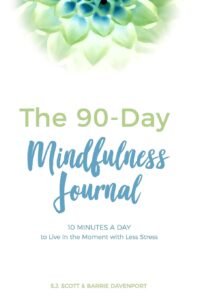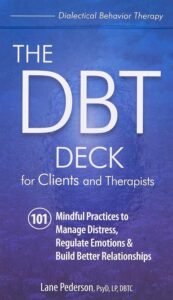A. What are the DBT (Dialectical Behavioral Therapy) Skills for Mindfulness – #1 WHAT Skills?
“WHAT” skills refer to ways of practicing thinking or “what” you do to take control of your mind. They help you cultivate mindfulness by staying present, aware, and non-judgmental of your experiences. Start by practicing one skill at a time.
1. Observe:
a. Observing is bringing your mind back to the sensations of your body and mind:
- Watch your thoughts pass by.
- Experience the moment without describing or labeling the experience.
- Don’t judge the experience as good or bad, pleasant or unpleasant.
- Pay attention to the present moment without attaching words, thoughts, or judgments to the experience.
- Observe both inside and outside of yourself.
b. Observing helps to quiet your mind:
- The goal is to be slightly detached but not to shut down completely.
c. Develop a “Teflon” mind:
- Let your experiences, feelings, and thoughts come into your mind and slip right through.
- Push away nothing. Cling onto nothing.
- This is extremely helpful when dealing with intense feelings due to distressing events.
d. Observe painful thoughts:
- Notice your body’s sensation through all five senses.
2. Describe:
a. Describe is putting words on the experience:
- When a feeling or thought arises or you do something, acknowledge it. e.g., say in your mind, “Sadness has just enveloped me,” or “Stomach muscles tightening,” or “A thought ‘I can’t do this’ has come into my mind”.
b. Label what you observe:
- Put a name on your feelings. Label a thought as just a thought, a feeling as just a feeling, an action as just an action.
c. Unglue your interpretations and opinions from the facts:
- Describe the “who, what, when, and where” that you observe. Just the facts.
d. Remember, If you can’t observe it through your senses, you can’t describe it:
- e.g., You can’t observe the intentions of others.
- e.g., You can’t observe the feelings of others.
3. Participate:
a. Throw yourself completely into activities in the current moment:
- Do not separate yourself from what is going on in the moment (dancing, cleaning, talking to a friend, feeling happy or feeling sad).
b. Become one with whatever you are doing, completely forgetting yourself:
- Throw your attention to the moment.
c. Act intuitively from Wise Mind:
- Do just what is needed in each situation.
d. Go with the flow:
- Respond with spontaneity.
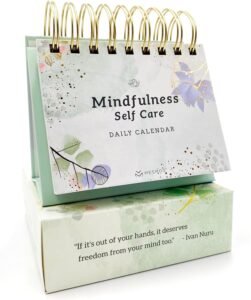
B. How do you practice the DBT (Dialectical Behavioral Therapy) Skills for Mindfulness – #1 WHAT Skills?
1. Observe:
Pay attention to your inner and outer experiences without judgment. Notice the present moment without attaching words, thoughts or judgments to the experience.
a. Observe with your eyes (sight):
- Lie on the ground and watch the clouds pass by.
- Watch who and what goes by before you without following them with your head or eyes.
- Look at something beautiful and spend a few minutes contemplating it.
b. Observe sounds (hearing):
- Stop for a moment and just listen.
- Listen to the silence between the sounds.
- Listen to music, observing each note as it comes and the spaces between the notes.
c. Observe smells around you (smell):
- When eating, notice the aroma of the food.
- When cooking, notice the aroma of the spices.
- When bathing, notice the smell of the shampoo.
d. Observe taste and the act of eating (taste):
- Put something into your mouth and pay attention to how it tastes.
- Lick a lollipop and notice just the sensation of taste.
- When eating your meal, take a bite of your food and pay attention to the taste of each mouthful.
e. Observe urges to do something:
- Notice when you feel an urge to do something impulsive.
- Practice “urge-surf” by imagining that your urges are a surfboard and you are standing on the board, riding the waves.
- Notice any urge to avoid someone or something.
- Scan your body and notice where in the body is the urge?
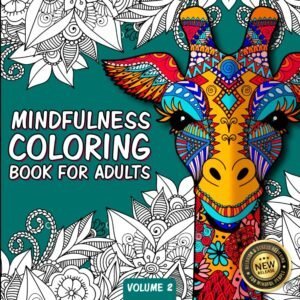
f. Observe sensations of touch on your skin (touch):
- Notice the sensation of walking. Notice how fast or slow you’re walking.
- When sitting, notice your thighs on the chair.
- Pay attention to anything touching you – feel your feet in your shoes, and the clothes touching your body.
- Touch something – the wall, a fabric, a pet.
g. Observe your breath:
i. Breathe evenly and gently, focusing your attention on:
- The movement of your stomach – practice belly breathing.
- The pauses in your breathing.
- Your breath while walking slowly
- Your breath while listening to a piece of music – follow your breath.
h. Observe thoughts coming in and out of your mind:
i. Notice thoughts as they come into your mind:
- Ask: “Where do thoughts come from?”
- Then, watch them to see if you can see where they come into your mind.
ii. Imagine that your mind is the sky, and that thoughts are clouds.
iii. Imagine thoughts as leaves on water flowing down a stream, boats drifting by on the lake, or train cars rolling by you.
iv. ****** When worries go round and round in your mind, move your attention to the sensations in your body (those most intense right now). Then, keeping your attention on your body sensations, notice how long the worries take to ooze away.
v. Step back from your mind, as if you are on top of a mountain and your mind is just a boulder down below:
- Gaze at your mind, watching what thoughts come up when you are watching it.
- Come back into your mind before you stop.
i. Imagine that your mind is a:
i. Conveyor belt, and thoughts and feelings are coming down the belt.
- Put each thought or feeling in a box, and then put it on the conveyor belt, and let it go by.
ii. Conveyor belt, and that you are sorting thoughts and feelings as they come down the belt.
- Label the types of thoughts or feelings coming by (e.g., worry thoughts, thoughts about my past, angry feelings, sad feelings, etc).
- Put them in boxes nearby for another time.
iii. River, and that thoughts and feelings are boats going down the river.
- Imagine sitting on the grass, watching the boats go by.
- Describe or label each boat as it goes by.
iv. Railroad track, and that thoughts & feelings are train cars going by.
- Describe and label each as it goes by.
j. Observe by expanding awareness:
i. Breathing in, notice your breath. Then, keep your breath in awareness; on the next breath, notice your hands. Then, keeping both in your awareness, on the next breath, expand your awareness to sounds.
- Continue holding all three in awareness at the same time.
- Practice this awareness of threes at other times, selecting other things to be aware of.
ii. Keeping your focus on what you are currently doing, gently expand your awareness to include the space around you.
iii. Hug a tree, and feel the sensations of the embrace.
- Attend to the embrace of the sheets and blankets or comforters around you as you lie in bed.
- Do this when you feel lonely and want to be loved or to love.
k. Open your mind to your senses:
i. Practice walking with your senses as wide open as you can make them.
ii. For one mouthful in a meal, pause with a spoonful or forkful of food.
iii. Focus your mind on paying attention to each sensation that comes into your mind.
iv. Be here. Be in the present now.
v. When a feeling arises within you, notice it – saying, e.g. “A feeling of sadness is arising within me”.
vi. When a thought arises within you, notice it – saying, e.g. “The thought ‘It is hot in here’ is arising within me”.
vii. Take just a moment of your time, and practice “nothing-to-do” mind.
- Let yourself become completely aware of your present experience, noticing sensations and the space around you.
2. Describe:
Put words to your experiences, describing what is happening in the moment.
a. Practice describing what you see outside of yourself:
i. Lie on the ground and watch the clouds in the sky. Find and describe cloud patterns that you see.
ii. Sit on a bench on a busy street or at a park. Describe one thing about each person who walks by you.
iii. Find things in nature – a leaf, a drop of water, a pet, or other animal. Describe each thing in as much detail as you can.
b. Practice describing thoughts and feelings:
i. Describe your feelings as they arise within you: “A feeling of anger is arising within me”.
ii. Describe your thoughts when you feel a strong emotion: “I feel X, and my thoughts are Y”.
iii. Describe your feelings after someone else does or says something: “When you do X, I feel Y”.
iv. Describe thoughts, feelings, and what you observed others do: “When you do X, I feel Y, and my thoughts are Z”. “When X occurs, I feel Y, and my thoughts are Z”.
v. Describe as many of your thoughts as possible while feeling a strong emotion.
c. Practice describing your breathing:
i. Each time you inhale and exhale:
i. As you inhale, be aware that “I am inhaling, 1”.
ii. When you exhale, be aware that ” I am exhaling, 1″.
iii. Remember to breathe from the stomach.
iv. When beginning the second inhalation, be aware that “I am inhaling, 2”.
v. And, slowly exhaling, be aware that “I am exhaling, 2”.
vi. Continue on up through 10.
vii. After you have reached 10, return to 1.
viii. Whenever you lose count, return to 1.
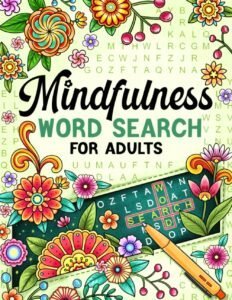
(at Amazon)
3. Participate:
Fully engage in the present moment, being actively involved in what you are doing. Give your full attention to the moment, and experience it without worry or distraction.
a. Participate with awareness of connection to the universe:
i. Focus on where your body touches an object (floor or ground, air molecules, a chair or armrest, bedsheets and covers, clothes, etc.).
i. Try to see all the ways you are connected to and accepted by that object.
ii. Consider the function of that object in relation to you. i.e. consider what the object does for you.
iii. Consider its kindness in doing that.
iv. Experience the sensation of touching the object, and focus your entire attention on that kindness until a sense of being connected, loved, or cared for arises in your heart.
ii. Dance to music.
iii. Become the count of the breath, becoming only “one” when you count 1, becoming only “two when you count 2, and so on.
iv. Become a word as you slowly say the word over and over and over.
